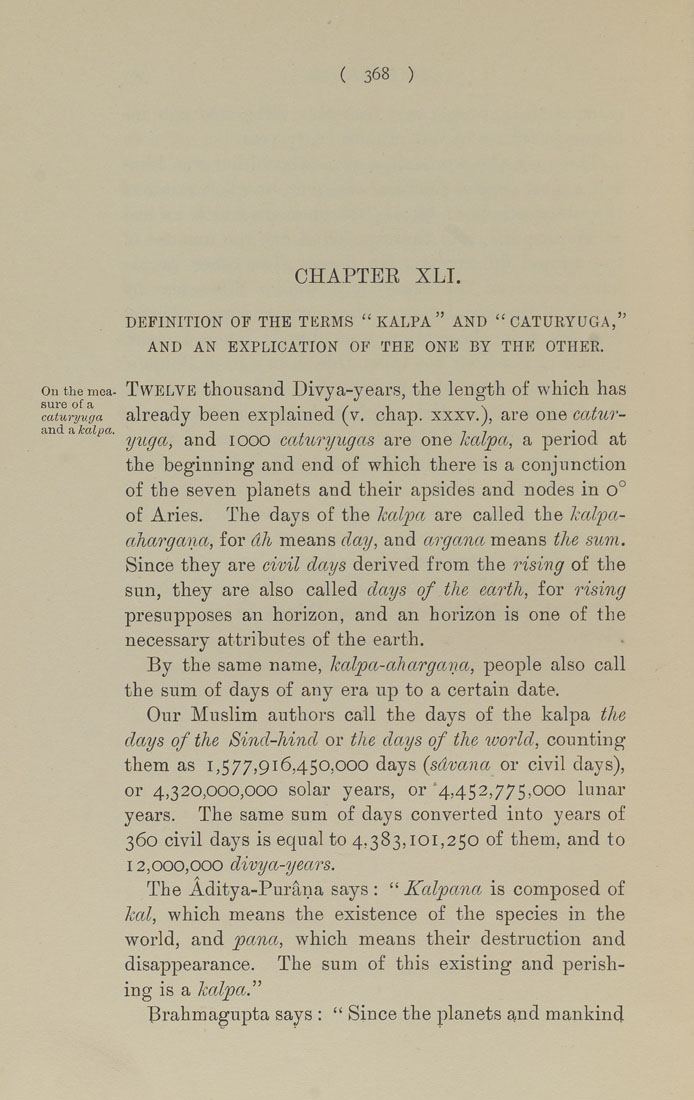( 368 )
CHAPTEE XLI.
DEFINITION OF THE TEEMS " KALPA " AND " CATUEYUGA,"
AND AN EXPLICATION OF THE ONE BY THE OTHEE.
onthemea- TwELVE thousand Divya-ycars, the length of which has
caturyuga already been explained (v. chap, xxxv.), are one catur-
and a kalpa. -, , -, . • i j
yuga, and lOOO caturyugas are one kalpa, a period at
the beginning and end of which there is a conjunction
of the seven planets and their apsides and nodes in o°
of Aries. The days of the kctlpa are called the kctlpa-
ahargana, for dh means clay, and argana means the sum.
Since they are civil days derived from the rising of the
sun, they are also called days of the earth, for rising
presupposes an horizon, and an horizon is one of the
necessary attributes of the earth.
By the same name, kalpa-ah argana, people also call
the sum of days of any era up to a certain date.
Our Muslim authors call the days of the kalpa the
clays of the Sind-hind or the days of the world, counting
them as 1,577,916,450,000 days (sdvana or civil days),
or 4,320,000,000 solar years, or '4,452,775,000 lunar
years. The same sum of days converted into years of
360 civil days is equal to 4,383,101,250 of them, and to
12,000,000 divya-years.
The Aditya-Purana says : " Kalpana is composed of
kal, which means the existence of the species in the
world, and pana, which means their destruction and
disappearance. The sum of this existing and perish¬
ing is a kalpct."
Brahmagupta says : " Since the planets and mankind
|








